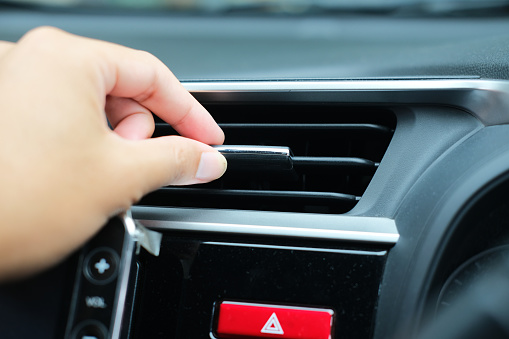December 23, 2024
My Car Heater Is Blowing Cold Air
With winter months quickly approaching, the need for a functioning car heater is imperative.the temperature starts to cool, we get a lot of appointment requests about a faulty heater. That’s because many drivers put off the issue–or don’t notice it until it’s time to use the car heater. Either way, having your car heater suddenly blows out cold air instead of heat on a cold winter day isn’t something anybody wants. An unreliable car heater can make the cold winter months in Canada practically unbearable.
Like a home heating system, your car’s heating system has many different components working together to heat your vehicle. This means that like your home’s heating system, several things can stop working at any time.
Low Coolant
Your car uses coolant— which is usually comprised of 50% antifreeze and 50% water—to keep your engine cool. When you’re running the heat during the winter, some of the coolant is diverted from the engine to the heater core.
While it’s normal for your car to take time to warm the engine, and in turn warm up the coolant, it shouldn’t take more than a few minutes.
If cold air continues to blow after this, the first thing you should check is the coolant level. When your car is running low on coolant, it is unable to divert some to the heater core to create warm air. A simple top-up will do the trick here.

Issues with Your Heater Core
Heater core issues can cause problems with your car’s heating system and overall performance. Below is a guide to understanding and troubleshooting these issues:
Symptoms of a Failing Heater Core:
- No Heat in the Cabin:
- The most common sign is the heater blowing cold air even when set to heat.
- Fogged-Up Windows:
- A leaking heater core can release coolant into the cabin, causing windows to fog up.
- Coolant Smell in the Cabin:
- A sweet smell inside the car often indicates a coolant leak from the heater core.
- Overheating Engine:
- A leaking heater core can lower the coolant level, causing the engine to overheat.
- Coolant on the Floor:
- A puddle of coolant under the dashboard or on the passenger-side floor is a strong indicator of a heater core problem.
Causes of Heater Core Problems:
- Corrosion:
- Over time, rust or scale can develop in the heater core, leading to leaks or blockages.
- Clogged Core:
- Old or contaminated coolant can cause debris buildup, blocking proper heat transfer.
- Damaged Seals:
- Aging seals can fail, leading to coolant leaks.
- Pressure Issues:
- A malfunctioning pressure cap or thermostat can increase system pressure, damaging the heater core.
Troubleshooting and Fixes:
- Check Coolant Level:
- Low coolant levels can mimic heater core problems. Refill and check for leaks.
- Inspect for Leaks:
- Look for coolant around the heater core, hoses, or under the dashboard.
- Flush the Heater Core:
- If the core is clogged, flushing it with a garden hose or a flushing kit can restore proper flow.
- Check the Thermostat:
- A stuck thermostat might cause insufficient heat.
- Test the Blower Motor:
- Ensure the blower motor is functioning to circulate warm air into the cabin.
When to Replace the Heater Core:
If the core is leaking, corroded, or damaged beyond repair, replacement is necessary. Replacing a heater core is a complex job, as it often requires removing parts of the dashboard. It’s recommended to consult a professional mechanic unless you’re experienced with vehicle repairs.
Prevention Tips:
- Regularly flush and refill the cooling system with the appropriate coolant.
- Use a high-quality coolant to prevent rust and scale buildup.
- Monitor the cooling system for leaks or pressure issues.
